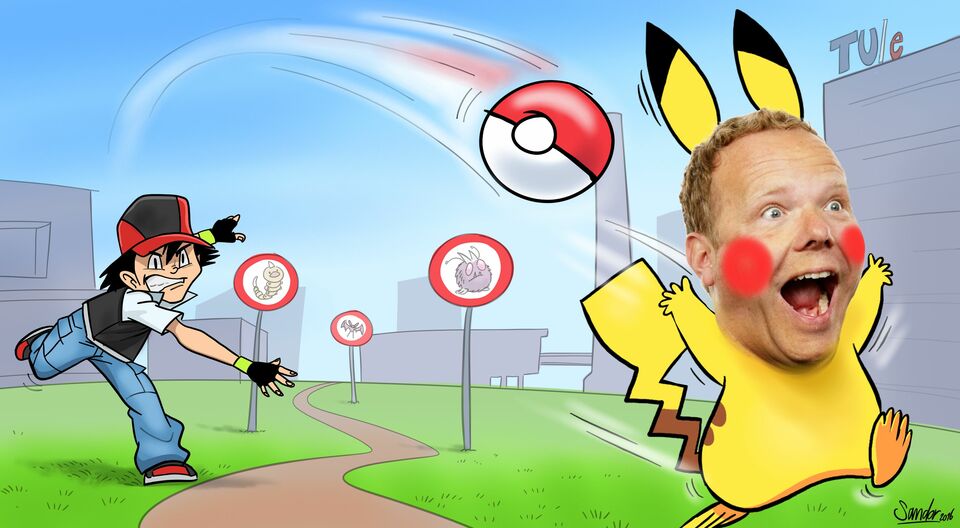Brainmatters | Pokémon Psychology
There are probably more aged Japanese soldiers - hidden in the jungle of a small tropical island in the Pacific - who think that the Second World War is still raging, than people who do not know what Pokémon Go is. In parks and streets, in the city and on the campus we see groups of people walking, stooping and focused on their minute screens. Occasionally they look at each other’s screens, then turn back to their own, and while swiping and chattering merrily, without taking any notice of their surroundings, they cross the cycle track where I have to slam on my brakes to give right of way to Squirtle, Rattata, and Meowth. I get reproachful looks. I had not spotted them there for a minute - those cute little Pocket Monsters. I do see a market for new traffic signs, but that is an aside.
Pokémon Go is a gigantic hit. Since its official launch in some thirty countries, on July 22 of this year, the app has been downloaded more than thirty million times in two weeks’ time. Users of the app - children, youngsters, but adults definitely too - cover many kilometers looking for the Pokémon, or are en route to so-called PokeStops - a kind of hangout for Pokémon, where you can also make them romp with each other. It is a dream for everyone who tries to get people to move by means of technology. And there are certainly some of those walking round on the TU/e campus, including myself.
In a technological respect Pokémon Go is not a game-changer. The first forms of augmented reality have existed ever since the 1960s. Similar mobile games have also been with us longer already, like Human Pacman from 2004. Why is this so successful then? I think it is because Pokémon Go fulfils essential psychological needs. It combines the nostalgia and recognizability of the Pokémon card game with endless possibilities for physical exploration and social interaction. Especially the sharing of experiences - while playing, but also at school, at work, and on social media - plays an important part in this.
Is it all gold that looks cute? Well, no. The problem is that we are constantly peering at our screens. Except for a potential hump and near-sightedness, there are warnings in particular concerning the use in traffic. The first Pokémon-related traffic fatality has occurred already. A couple of years ago colleagues from Industrial Design had already invented a solution for that. Just play outside without any screens (football, hide and seek), but with a few digital gadgets that make things extra interesting. Head Up Games they are called - also known as HUGs. Now doesn’t that sound awfully cute?
Wijnand IJsselsteijn | Professor of Cognition and Affect in Human-Technology Interaction


Discussion